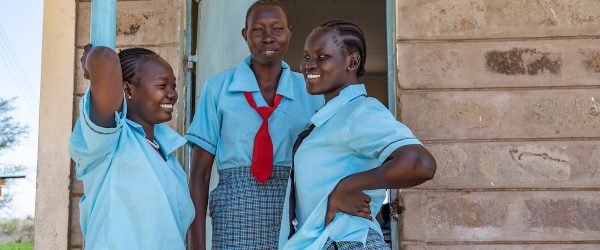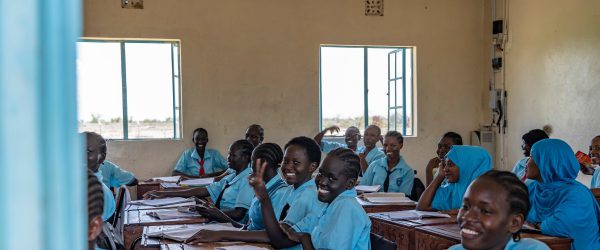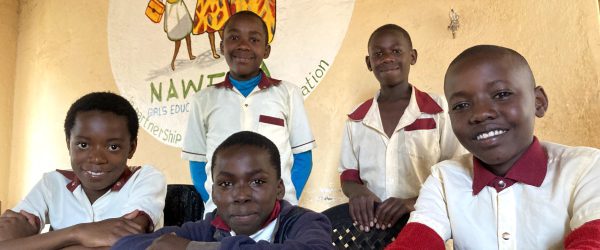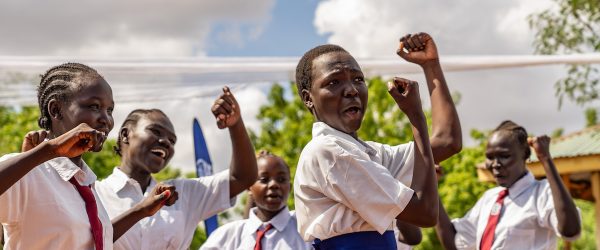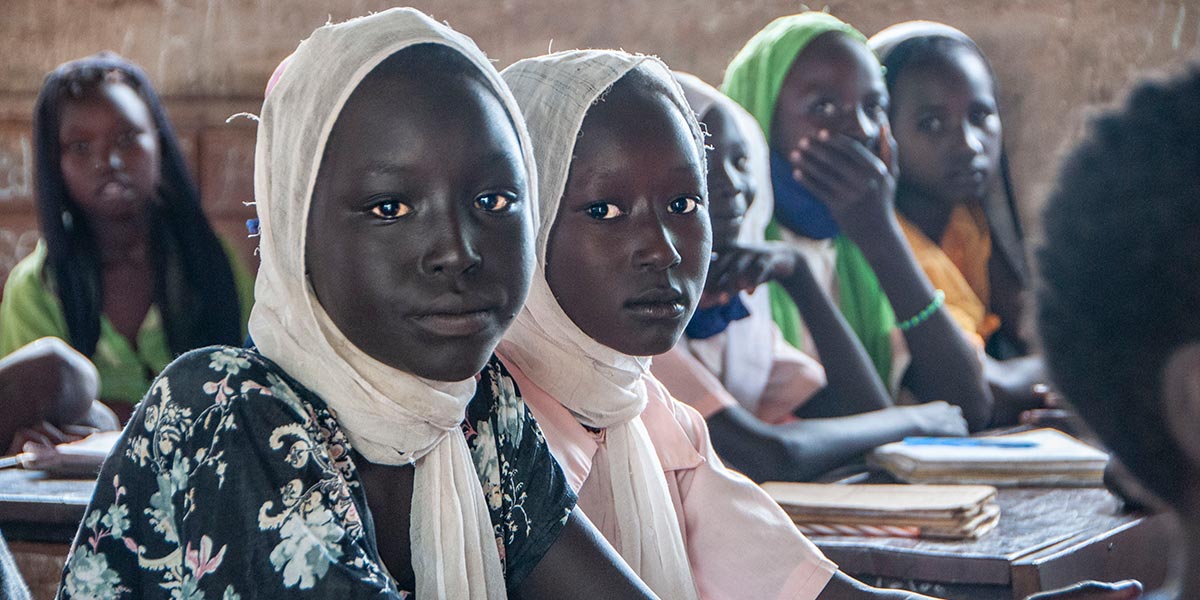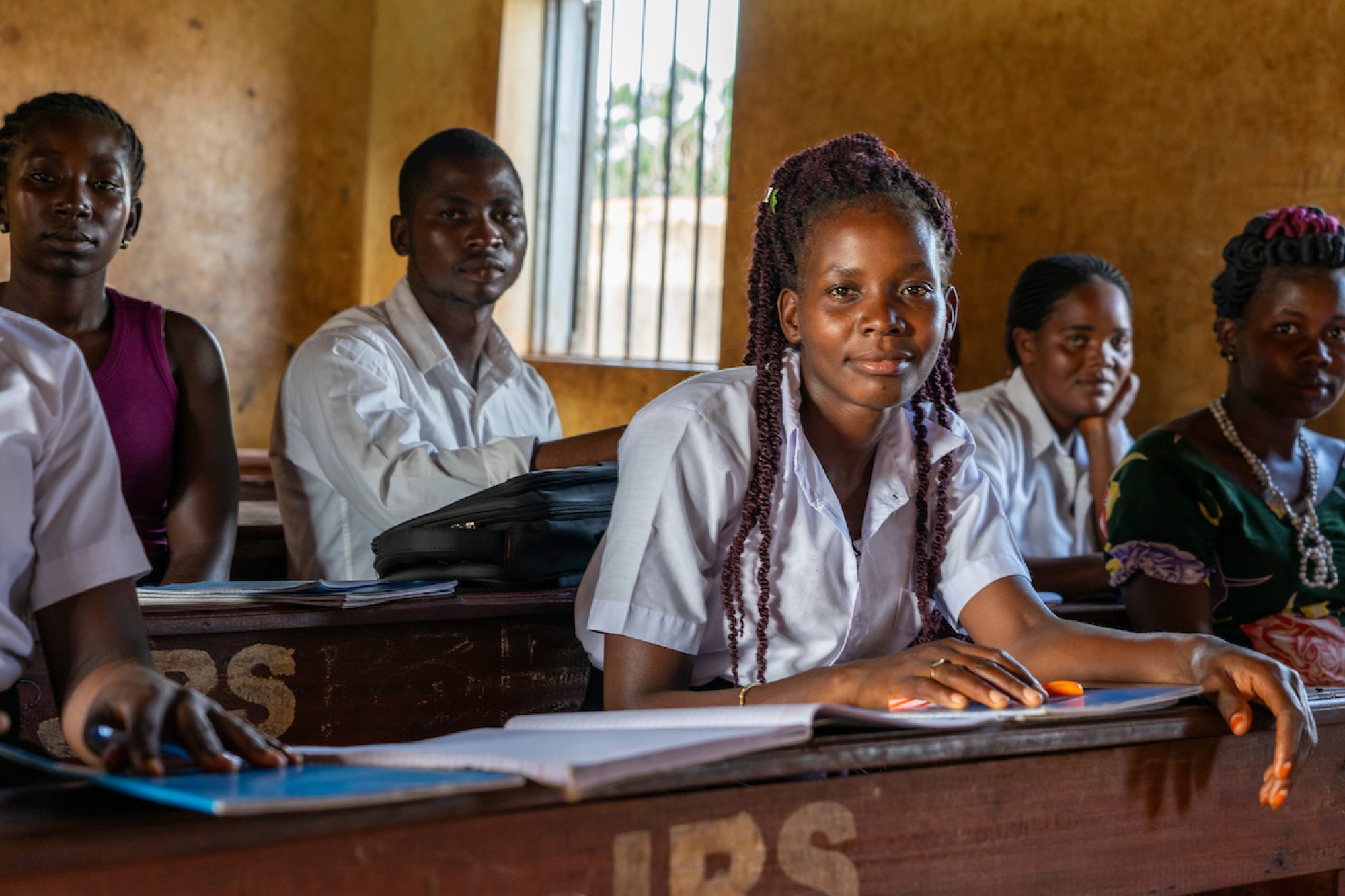
Gender-
responsive
education
Education is vital to challenging harmful gender norms, power dynamics, discrimination and entrenched stereotypes that aggravate and drive conflict, limiting the free and full development of the individual.
At JRS, we are committed to offering gender-responsive education programmes to ensure that forcibly displaced girls and young women have access to environments that offer learning, safety, security, and protection.
The importance of secondary education for girls
Secondary education represents an important phase of growth, development, and opportunity. Although significant progresses have been made in refugees’ access to education, UNHCR estimates that 65% of refugees are enrolled in primary education, whereas only 42% advance to secondary education.
Refugee adolescents, especially girls, face intersectional barriers that limit their access to and completion of secondary school.
Secondary education is a lifeline for girls living in displacement. Each additional year of secondary education for girls results in lower risks of early marriage and early pregnancy. The further girls progress in school, the more likely they are to earn an income, become self-reliant, and contribute to the growth and well-being of their families and communities.
Breaking down barriers to girls’ secondary education
Poverty is the most significant obstacle to refugee girls’ access to and completion of secondary education. With limited resources, families choose to invest in their sons’ education as they are seen as having greater opportunities to work, while girls are charged with domestic duties. Additionally, as climate change worsens, girls will increasingly be forced to leave school to walk longer distances to fetch water or be sold for a dowry to support their families.
Traditional attitudes towards girls’ education weigh heavily, especially in places where child marriage and teenage pregnancy are common.
Lack of menstrual health and hygiene (MHH) supplies, facilities, and information also negatively impact the ability of girls to participate in school.
For girls to attend and remain in school, we need adequate secondary educational facilities that can guarantee a welcoming learning environment, safe and free from all forms of gender-based violence and discrimination.
In the face of the growing impact of climate change, an increasing focus should be put on accessible school infrastructure that is capable of accommodating all students and their diverse needs while protecting them from extreme heat. School infrastructure should also include period-friendly facilities that allow students to manage their periods safely and with dignity.
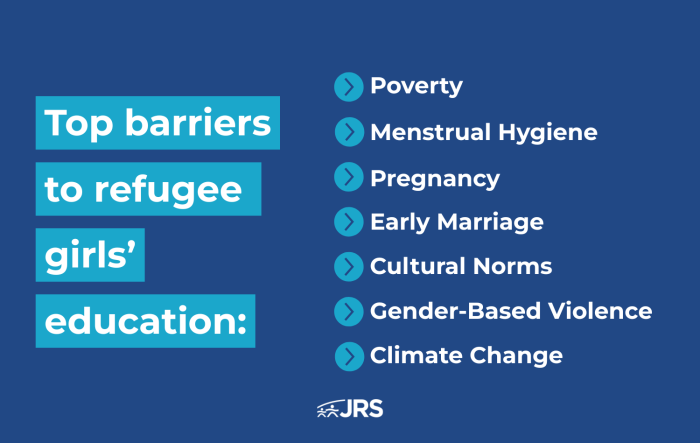
How is JRS keeping girls in school?
JRS offers GRE programmes that are firmly aligned to international standards, such as the Inter-agency Network for Education in Emergencies (INEE) Minimum Standards. Our approach considers the unique needs and experiences of girls and boys, women and men, and seeks to address gender inequalities in education, and beyond.
In line with this focus, JRS keeps refugee girls in school by:
- Pledging to support inclusive secondary education in global forums. JRS has sponsored the multistakeholder pledge, “Empowering Futures: A Comprehensive Global Refugee Forum Pledge for Inclusive Secondary Education!” at 2023 Global Refugee Forum.
- Managing secondary schools in refugee camps and providing extra- and co-curricular activities that promote gender equality and are tailored to the specific needs of both girls and boys. The involvement of boys too is critical to achieving long-lasting cultural changes that can break inter-generational cycles of poverty, stigma, and discrimination.
- Implementing scholarship programmes that support the access to education, at both the secondary and tertiary level and targeted to students at risk and from disadvantaged backgrounds.
- Investing in increased and improved Menstrual Health and Hygiene (MHH) -compliant infrastructure, as well as distributing MHH supplies and conducting MHH trainings.
Participating in working groups such as the Gender Working Group of the Inter-agency Network for Education in Emergency (INEE) and the Secondary Education Working Group co-led by UNHCR and Plan International.

